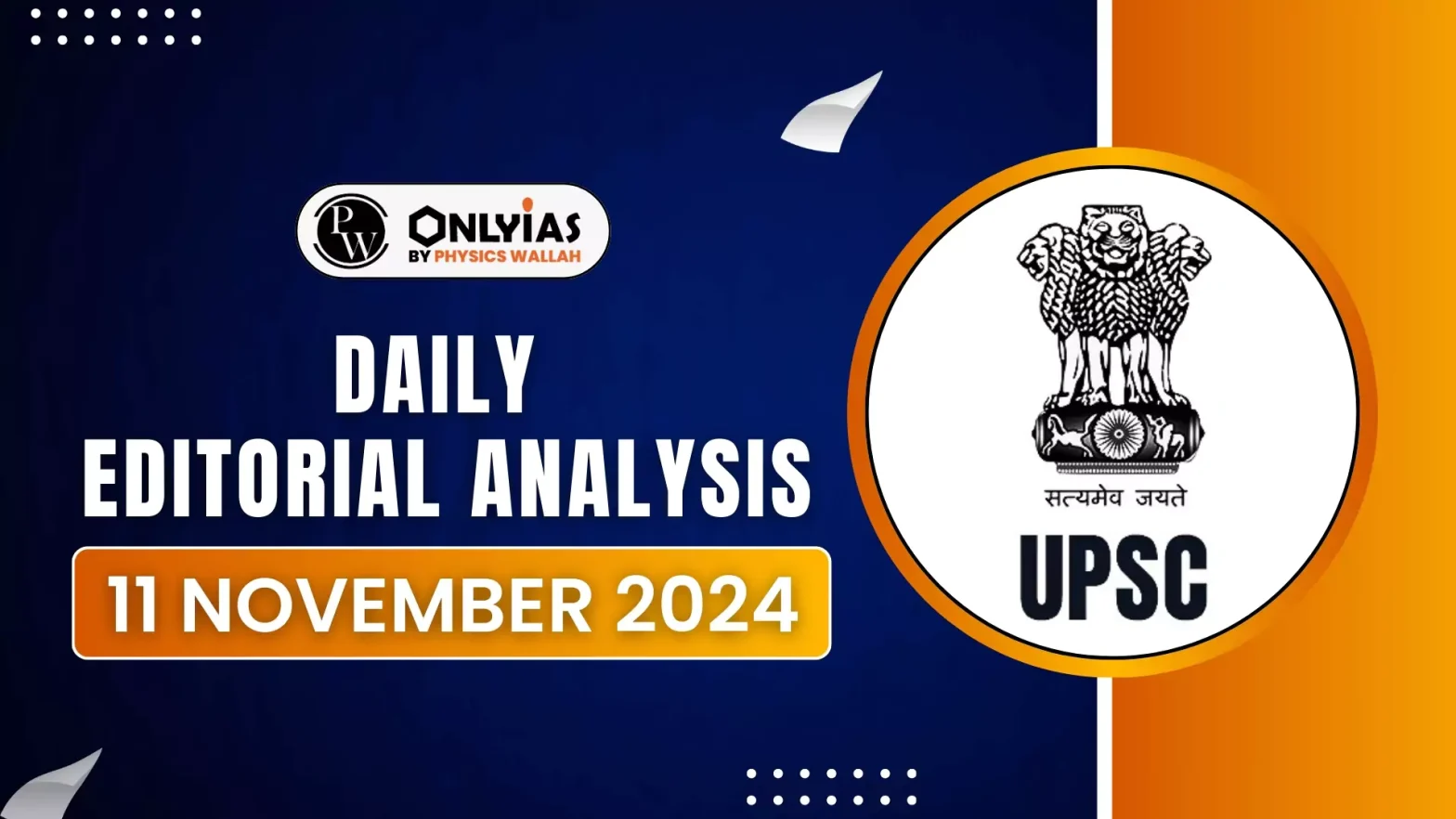India’s demographic dividend, fueled by a large working-age population, is at risk as the fertility rate declines. To avoid the middle-income trap, India must transition workers from agriculture to manufacturing by addressing key barriers and improving the business environment.
The Demographic Dividend
- The demographic dividend refers to the economic benefits that arise when a country’s population is predominantly in the working-age group (15-64 years).
- For India, this has been a source of optimism for sustained economic growth since the liberalisation of the economy in the early 1990s.
- However, demographic projections indicate that this advantage may soon decline. Within the next 10 years, India will witness a gradual reduction in the proportion of its working-age population.
Enroll now for UPSC Online Course
Decline in Fertility Rates
- Current Fertility Trends:
- Most states have already fallen below the replacement-level fertility rate of 2.1 children per woman, which is necessary for a stable population.
- Southern states like Andhra Pradesh and Karnataka, with TFRs under 1.75, are leading this trend, while states such as Punjab and West Bengal are also seeing similar declines.
- Implications:
-
- India’s rapid decline in TFR challenges the conventional belief that lower birth rates are linked to improvements in education and income.
- Despite modest growth in per capita income, keeping India in the lower-middle-income bracket, the TFR has fallen from 2.6 in 2010 to 1.99 today.
- As India approaches middle-income status in the next decade, this decline is expected to accelerate.
- The question now is whether India can achieve significant wealth before it faces an ageing population—no longer just a concern, but an existential challenge.
Challenges of India’s Demographic Dividend
- Underutilization of the Demographic Dividend: India’s large working-age population remains underutilised, with many individuals in low-productivity agricultural jobs or unemployed and engaged in exam preparation rather than contributing actively to the economy.
Workforce Transition: India vs. China
- India: Since economic liberalisation in 1991, India has reduced its workforce in agriculture by only 17 percentage points, from 63% to 46%.
- China: In contrast, 30 years after its own liberalisation, China reduced its agricultural workforce by 32 points (from 70% to 38%), enabling higher economic growth and significantly increasing per capita income.
|
- India’s Low Labour Force Participation Rate (LFPR)
- India’s urban LFPR remains low at around 50%, indicating a large portion of the working-age population is not engaged in the formal economy.
- Low LFPR limits potential economic output, a barrier to fully realising the demographic dividend.
- If India continues on this path, it risks falling into a middle-income trap from which only a handful of countries have escaped.
Check Out UPSC NCERT Textbooks From PW Store
Middle-income trap
- The middle-income trap describes a scenario in which a country’s economic growth stagnates after it reaches middle-income status, making it challenging to transition to a high-income economy.
- This phenomenon can prevent nations from achieving sustained economic advancement.
- South Africa illustrates how difficult it is to escape this trap once caught, showing the need for strategic economic planning.
- Even China, despite high growth, faces challenges as its growth decelerates. India must address structural issues quickly, given its narrowing demographic window.
|
Need for a Prosperous Manufacturing Sector
- To capitalise on its demographic dividend, India must focus on expanding its manufacturing sector, which has stagnated despite the growth of the services sector.
- Manufacturing, especially in labour-intensive industries, creates far more jobs compared to services.
- For example, the textile and apparel industry, valued at $150 billion, employs 45 million people, significantly more than the 5.5 million people employed in the $250 billion IT-BPM sector.
- Employment in Manufacturing: Sectors like textiles also provide significant employment opportunities for women, empowering them and reducing their dependency on unpaid labour.
Challenges to Manufacturing Growth
Despite the potential of manufacturing to create jobs, India faces several obstacles in boosting this sector:
- Regulatory Barriers: According to World Bank surveys, one in six manufacturers cites business licensing and permits as major constraints, compared to just 3% in Vietnam.
- Additionally, cumbersome trade and customs regulations and difficulties in accessing land further stifle growth.
- Infrastructure Issues: Factories often face difficulties due to restrictive land use and building regulations.
- Many can only use half of their allocated land for operations, raising costs and reducing productivity.
Recommendations for Strengthening Manufacturing
- Business Environment: The government should focus on improving the business climate by reducing tariffs on inputs to lower production costs and increase competitiveness in the global market.
- Free Trade Agreements: Finalising free trade agreements (FTAs) with the U.K. and the EU should be prioritised to expand market access for Indian products.
- Labour Reforms: State governments should implement labour reforms that allow for greater flexibility, such as enabling workers to choose flexible working hours and improving conditions for factory workers.
- Infrastructure Upgrades: Addressing issues like restrictive building standards and creating worker housing in industrial zones can significantly reduce costs and encourage investment.
- Learning from China’s Success: China successfully transitioned from an agricultural to a manufacturing-based economy in a relatively short period.
- With a similar per capita income to India in the 1980s, China moved millions from agriculture to manufacturing, driving rapid economic growth.
- India must now focus on this transition before its demographic dividend fades.
Enroll now for UPSC Online Classes
Conclusion
India must act swiftly to make the most of its demographic dividend before it diminishes. While the services sector has shown growth, manufacturing must be the focus of future economic strategies.Only through such focused efforts can India hope to overcome the middle-income trap and achieve sustainable economic growth.
![]() 11 Nov 2024
11 Nov 2024

